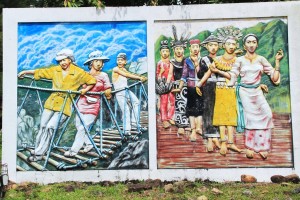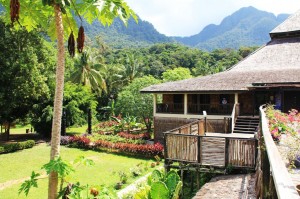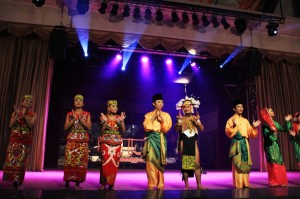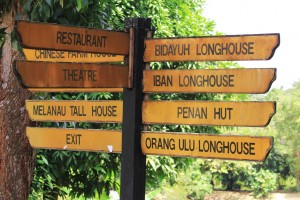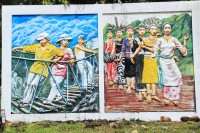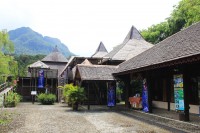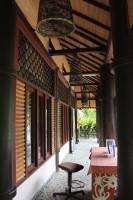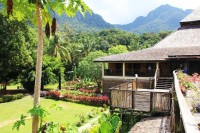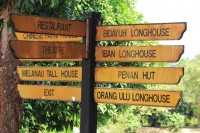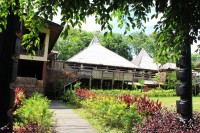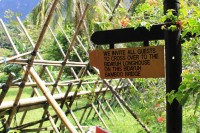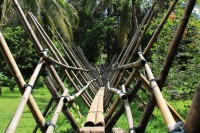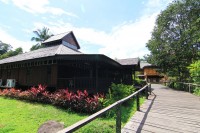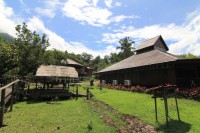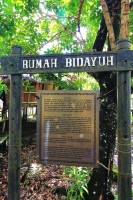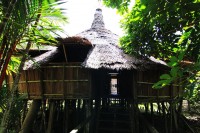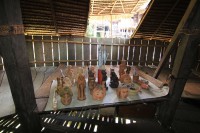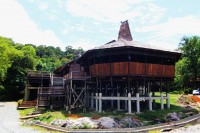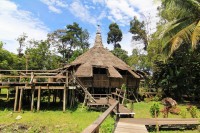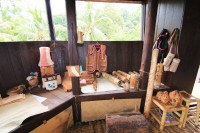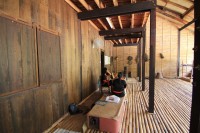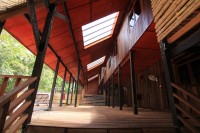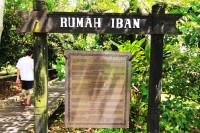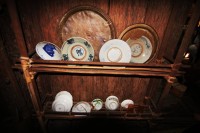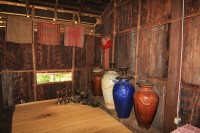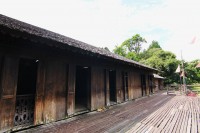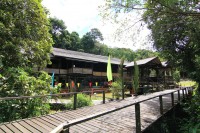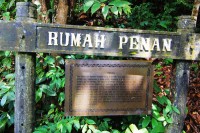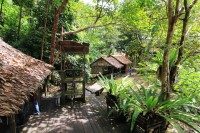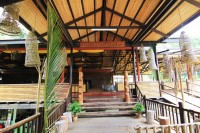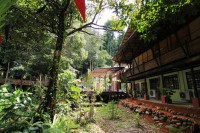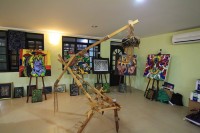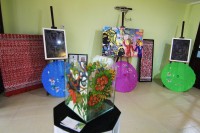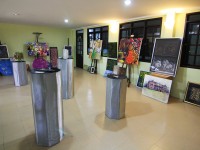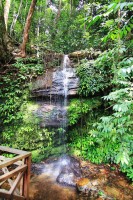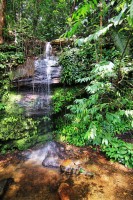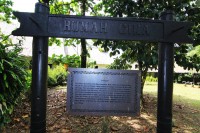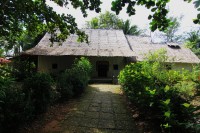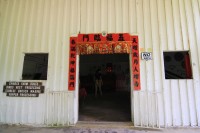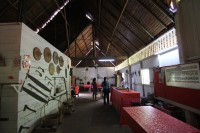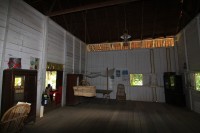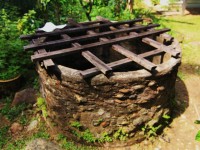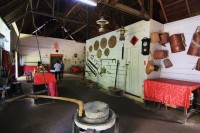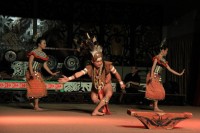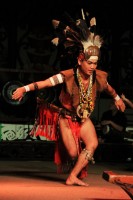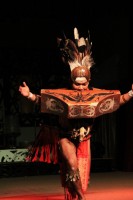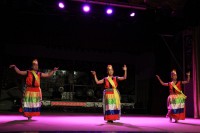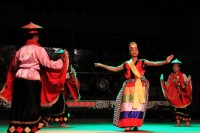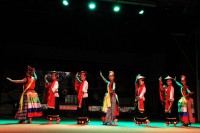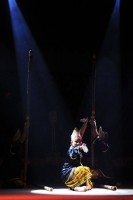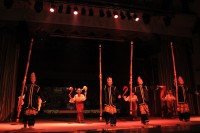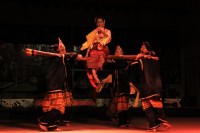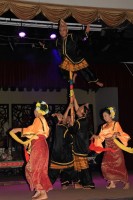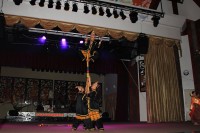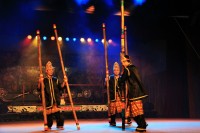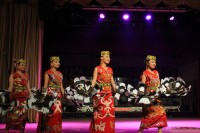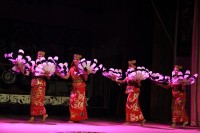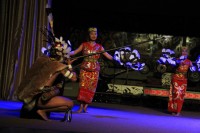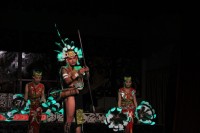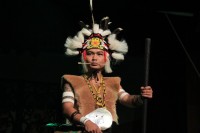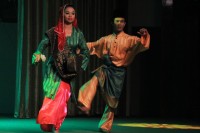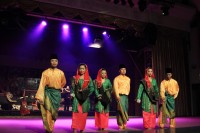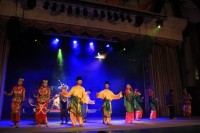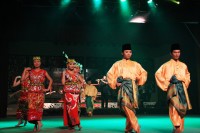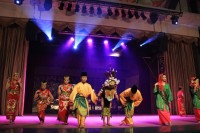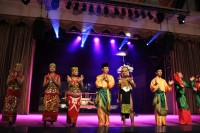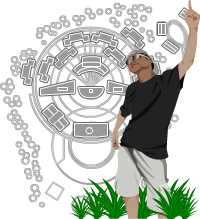Sarawak Cultural Village at Kuching Sarawak
Sarawak Cultural Village, Located at Pantai Damai, Santubong, which was just 32km from the state capital, Kuching. It was Known as the ‘Living Museum’ to preserve Sarawak’s cultural heritage.
There are 150 people living in the village, demonstrating the traditional lifestyle of the sarawak diverse tribes. Replicas of traditional houses represent major ethnic group of sarawak, including longhouses of the Iban, Bidayuh and Orang Ulu, a Melanau tall-house and a Chinese farm house.
Visitor are encourage to try out traditional costumes, and activities. There are also various handy craft available for sale, visitors are able to watch traditional dances from various ethnics group of Sarawak.
Continue with this article will be some description of various major ethnic groups in Sarawak.
Table of Contents
THE IBAN LONGHOUSE
The Ibans
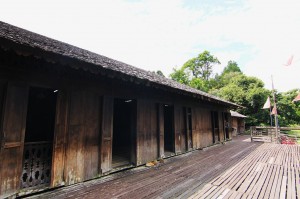
The Iban are the largest indigenous tribe constituting 29.2% of the state’s population. They are found in all areas of sarawak. Their longhouses and villages may be seen on the lower and middle reaches of most major rivers. Traditionally animists, many Iban are now Christians. The rural Iban cultivate rice and cash crops. Many lives in longhouses, each consisting of a row of families rooms with a long communal verandah under one wide solid roof.
Festival and ceremonies
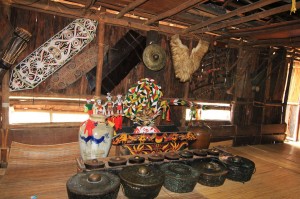 The Iban celebrates many Gawai (festivals) and ceremonies as part as their farming cycles. Minor illness requires a ceremony to cure it, as does a bad dream, the sighting of an omen. Weddings and funerals may call for a bigger ceremony. The biggest festivals are celebrated by one or several longhouses. Gawai Kenyalang (hornbill festivals) or Gawai Antu (festivals for the departed) belong to this category. They require long preparation, careful planing, and heavy expenses and such are quite rare occassion.
The Iban celebrates many Gawai (festivals) and ceremonies as part as their farming cycles. Minor illness requires a ceremony to cure it, as does a bad dream, the sighting of an omen. Weddings and funerals may call for a bigger ceremony. The biggest festivals are celebrated by one or several longhouses. Gawai Kenyalang (hornbill festivals) or Gawai Antu (festivals for the departed) belong to this category. They require long preparation, careful planing, and heavy expenses and such are quite rare occassion.
Iban Women
The Iban women produce artistic masterpieces of woven textiles on a backstrap loom. They used basic method of decorating their textiles using the wrap-ikat technique, where patterns are tied and dyed on vertical treads before wearing. Wrap-ikat is generally used to make the large ceremonial pieces of cloth called Pua Kumbu.
Pua Kumbu are used to decorate the walls of a family’s room at time of major festivals. They proclaim the housewife’s skills. Older pieces are displayed as treasured heirlooms. Pattern in weaving are related to traditional designs and motifs used in other native art forms. The designs, no less than the finished artifacts, are family heirloom too.
Head Trophies
To an Iban man, a head trophy was a personal badge of honour. He was not considered eligible for marriage until he had produced such a token of his courage. In the assembly of tribal elders the owner of many head was deferred to as wise counsellor. Heads were brought home from the battlefield in triumph. they were suspended over the small fireplaces in the longhouse verandah. Let every visitor see them, and draw his own conclusions. At festival times, offering will placed before the heads. Properly placated heads can bring blessing to a longhouse, ignored or insulted ones can wreck havoc in the form of bad dreams, epidemic, flood or fire.
Heirlooms Jars
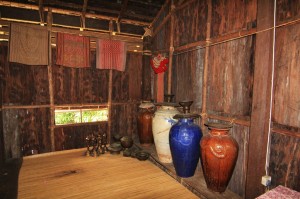
Beside head trophies, Pua Kumbu, cannon and gongs, the Iban and other Borneo people regarded jars a family heirlooms. Many of these jars were imported into Sarawak centuries ago.The jars are named according to the size and class, and are highly valued. Some of them are believed to possess special powers or represent an honoured ancestor. Many jars are believed to contain magical power to cure illness or summon spirit when gently struck. Some jars are said to emit human sound to warn their owners of impending disasters.
Tomb Hut
In some part of Sarawak the festival for the departed spirits (Gawai Antu) is held once every generation. As part of this rite, colourfully decorated little huts called sungkup are placed in the graveyard. Skilled Carvers are commissioned to make this hut. After a lengthy festival, which include one night of the ritual weeping and one night of inviting the departed to attend the festival “in person”, the sungkup are blessed and carried to the graveyard. There they are left after the ceremonies are over.
Pig-Traps Charms
This marker, the tuntun peti, is used to measure the height of the spring trap s-wire. The little figure is a charm, with power to attract game to come near the trap and be impaired by spears concealed in the undergrowth. In some areas the marker is taken home after the trap has been set and measured. It is displayed in the family room, where people can handle and admire it. Admiration of the tuntun, feeds its power to charm wild boar, deer and other game.
Gongs Ensemble
The main music Instruments of the Iban are gongs and drum ensembles. A full consort consists of a set of live of seven melodies gongs suspended horizontally over a rack. Two bigger rhythm gongs hung vertically from frames, and the long skin drum shaped like hour-glass. The rhythmical pounding of the gongs are kept up at night with the players relieving each other every few hours. Traditional dancers like nyajat are performed to the sound of the gongs.
Hornbill Festival
Originating from a headhunting rite, the Gawai Kenyalang (Hornbill Festival) is still celebrated in some part of Sarawak. A richly decorated hornbill ettigy is cast for this occasion. Some of which are very large, seven feet in length and up to three foot tall. They are carved from soft wood, carefully embrilliant with oil paint a few days before the festival. After elaborate ceremonies accomplished with a gigantic feast, the hornbill is placed on a tall staff. Its soul is believed to fly straight as an arrow, arresting havoc and destruction among the unsuspecting enemy warriors.
THE CHINESE FARMHOUSE
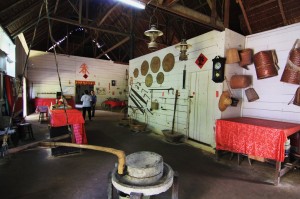 The Chinese form 29.2% of the State’s population. Most of them have immigrated within the last 100 years, but Chinese trading contacts with Sarawak commenced at least 1,500 years gao. There were some Chinese gold-miners and antimony-workers in Sarawak in the early decades of the 19th Centuary. Towards the turn of the century Chinese immigration was actively encouraged and sponsored by the White Rajah. He hoped the hardworking newcomers would boost the State’s agricultural production, and provide cheap labour. Today, the Chinese are concentrated in the Kuching, Sibu, Sarikei and Miri Divisions. They are primarily urban, though a significant number is engaged in agriculture. The first pepper planters of Sarawak, now one of the world’s biggest producers of this spice, were Chinese.
The Chinese form 29.2% of the State’s population. Most of them have immigrated within the last 100 years, but Chinese trading contacts with Sarawak commenced at least 1,500 years gao. There were some Chinese gold-miners and antimony-workers in Sarawak in the early decades of the 19th Centuary. Towards the turn of the century Chinese immigration was actively encouraged and sponsored by the White Rajah. He hoped the hardworking newcomers would boost the State’s agricultural production, and provide cheap labour. Today, the Chinese are concentrated in the Kuching, Sibu, Sarikei and Miri Divisions. They are primarily urban, though a significant number is engaged in agriculture. The first pepper planters of Sarawak, now one of the world’s biggest producers of this spice, were Chinese.
THE BIDAYUH LONGHOUSE
The Land Dayaks
The Bidayuh, formerly known as Land Dayaks account for 8.3% of Sarawak’s Population. They live in South-West Sarawak, in the Kuching and Samarahan Division. Their traditional religion is animism, but today many Bidayuh are Christians. There are five main Bidayuh language groups: Puruh, Jagoi, Siburan, Bukar/Sadong, Selakau Lara. There is considerable variance among these dialects, through scholars detect some linguistic common ground. Many Bidayuh are farmers, Cultivating padi (dry rice) and cash crops like pepper, rubber or cocoa.
Headhouse
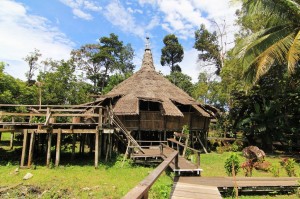
The ceremonial meeting-house of the Bidayuh was used to store the skulls of enemies killed in battle. Hence the name “headhouse”. The Bidayuh call it panggah or baruk acording to the regional dialect. Unmarried men used to sleep in the head house ready to wake at the slightest noise and defend the adjoining longhouse from a surprise attack. Meetings were held here to discuss seasonal farm work or other affairs affecting the whole community. The headhouse was also the armoury – cannon, muskets, spears, swords, blowpipes and shields were hung around the walls. The long drums are always kept in the Panggah. Together with the large hanging gongs they are still played for ceremonies and dancing. They were also used to sound the alarm in the event of enemy attack, fire or any other emergency.
Spirit Figure
Crudely carved male and female figurines, the tegundo are placed on both sides of the path leading to a village, longhouse or farm. These bonevolent spirit figures are credited with the power to drive away evil.
Bamboo Carving
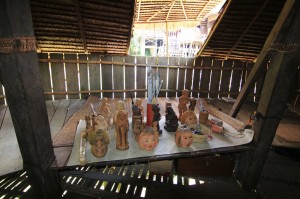
The Bidayuh use bamboo of anything and everything. Bamboo articles for daily use are decorated with surface incision or whitting, the patterns are cut into the smooth bamboo skin, which is then peeled away. Red and black natural dyes are rubbed over the articles, staining only the exposed portions; polishing will bring out the design in dainty relief. The distinctive Bidayuh water piped, passed from hand to hand for a frugal puff of smoke, are usually decorated by this method.
PENAN TRIBE
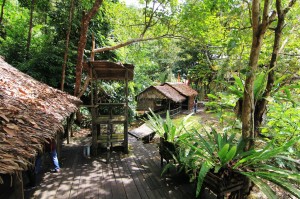 The Penan are forrests nomads living in the Miri and Kapit Divisions. Some have settled near longhouses in these areas, engaging in barter trade and sometimes working for the settlers. The majority of Penan continues to live as nomads. They construct temporary shelters of saplings, palm leaf and tree bark near food sources. They abandon a shelter because the food has run out or because of a death in the family group. The Penan are skilled at making and using blowpipes and forging swords. Their womenfolk make beautiful baskets and mats; all these handicrafts are used to barter for their frugal needs: salt , cloth and tabacco. The Penan are skillful trackers and hunters. They live on game and fish and forest plants. Their staple food is wild sago. The State Government’s policy is to persuade the nomadic Penans to settle down. Schools and longhouses have been built to induce them to settle permanently.
The Penan are forrests nomads living in the Miri and Kapit Divisions. Some have settled near longhouses in these areas, engaging in barter trade and sometimes working for the settlers. The majority of Penan continues to live as nomads. They construct temporary shelters of saplings, palm leaf and tree bark near food sources. They abandon a shelter because the food has run out or because of a death in the family group. The Penan are skilled at making and using blowpipes and forging swords. Their womenfolk make beautiful baskets and mats; all these handicrafts are used to barter for their frugal needs: salt , cloth and tabacco. The Penan are skillful trackers and hunters. They live on game and fish and forest plants. Their staple food is wild sago. The State Government’s policy is to persuade the nomadic Penans to settle down. Schools and longhouses have been built to induce them to settle permanently.
There are more stories to be told. Welcome to Sarawak Cultural Village, it will be a wonderful and pleasant Adventure for those who want to know more about diverse and unique Sarawak Culture. Below will be some of the photos taken during the trip in November 2011.

